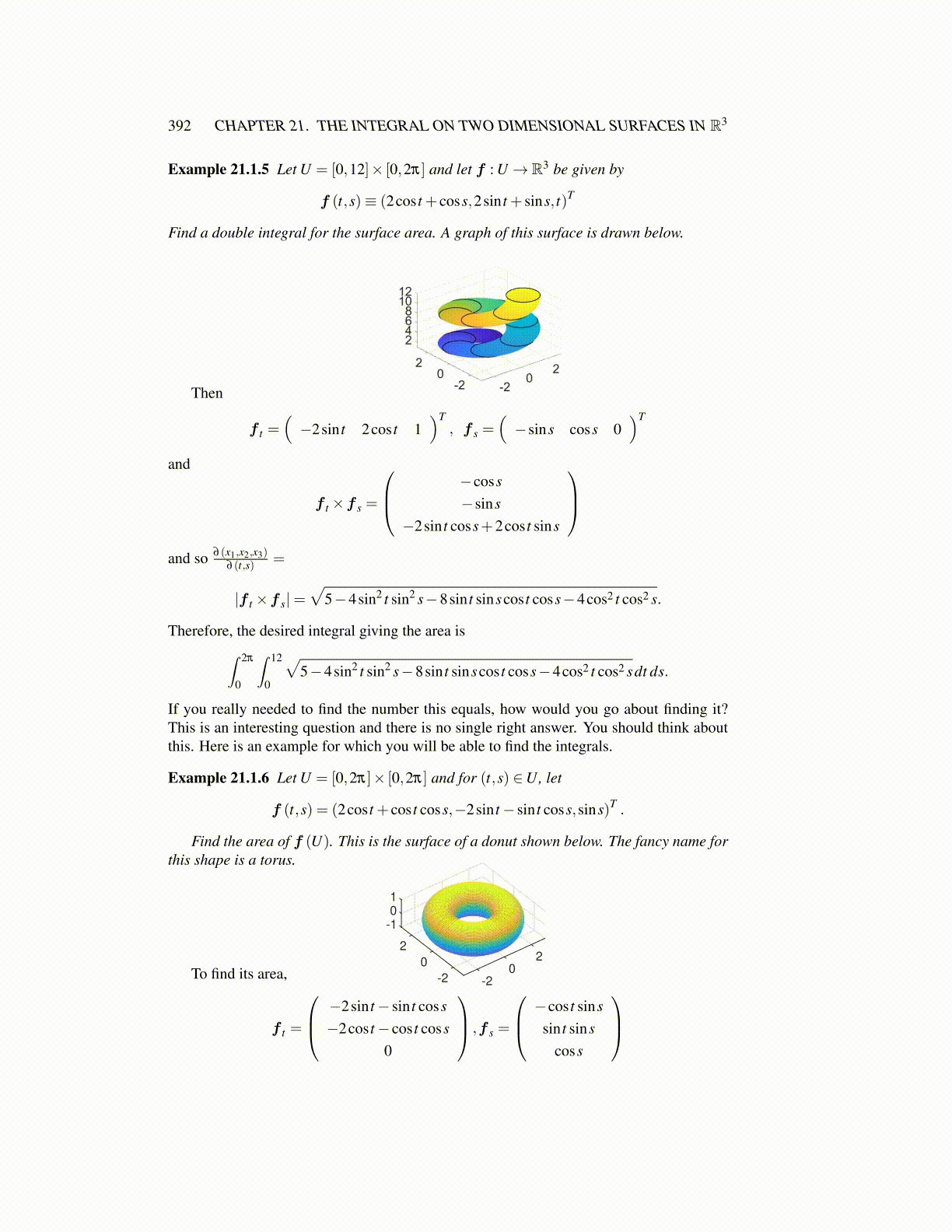
392 CHAPTER 21. THE INTEGRAL ON TWO DIMENSIONAL SURFACES IN R3
Example 21.1.5 Let U = [0,12]× [0,2π] and let f : U → R3 be given by
f (t,s)≡ (2cos t + coss,2sin t + sins, t)T
Find a double integral for the surface area. A graph of this surface is drawn below.
Then
f t =(−2sin t 2cos t 1
)T, f s =
(−sins coss 0
)T
and
f t ×f s =
−coss−sins
−2sin t coss+2cos t sins
and so ∂ (x1,x2,x3)
∂ (t,s) =
|f t ×f s|=√
5−4sin2 t sin2 s−8sin t sinscos t coss−4cos2 t cos2 s.
Therefore, the desired integral giving the area is∫ 2π
0
∫ 12
0
√5−4sin2 t sin2 s−8sin t sinscos t coss−4cos2 t cos2 sdt ds.
If you really needed to find the number this equals, how would you go about finding it?This is an interesting question and there is no single right answer. You should think aboutthis. Here is an example for which you will be able to find the integrals.
Example 21.1.6 Let U = [0,2π]× [0,2π] and for (t,s) ∈U, let
f (t,s) = (2cos t + cos t coss,−2sin t− sin t coss,sins)T .
Find the area of f (U). This is the surface of a donut shown below. The fancy name forthis shape is a torus.
-1
0
2
1
20
0-2 -2
To find its area,
f t =
−2sin t− sin t coss−2cos t− cos t coss
0
,f s =
−cos t sinssin t sins
coss